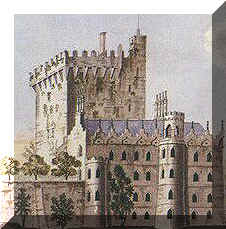Category Archives: Uncategorized
Dyeing the Chicago River for St. Patrick’s Day
The Chicago River
Chicago is famous for a somewhat peculiar annual event: dyeing the Chicago River green. The tradition started in 1962, when city pollution-control workers used dyes to trace illegal sewage discharges and realized that the green dye might provide a unique way to celebrate the holiday. That year, they released 100 pounds of green vegetable dye into the river—enough to keep it green for a week!
Today, in order to minimize environmental damage, only 40 pounds of dye are used, making the river green for only several hours. Although Chicago historians claim their city’s idea for a river of green was original, some Savannah natives believe the idea originated in their town. They point out that, in 1961, Savannah mayor Tom Woolley had plans for a green river. Due to rough waters on March 17, the experiment failed, and Savannah never attempted to dye its river again.
Cybercrime way up!
Losses from cybercrime and online scams more than doubled in 2009 to 559 million dollars as Internet criminals used more sophisticated techniques, an FBI-led task force said Friday.
A customer browses the internet in a cybercafe. Non-delivery of items bought on the Internet was the biggest source of fraud, accounting for 19 percent of losses, and credit card and auction fraud each accounted for 10 percent.
Great Gesture!
On Wednesday, the U.S. women’s under-17 team defeated Haiti 9-0 in their first qualifying match for the CONCACAF U-17 Women’s Championships in Costa Rica. Once the final whistle blew, Haitian goalkeeper Alexandra Coby was so overwhelmed with emotion that she dropped to the pitch, weeping. It was all just too much for her and understandably so — losing by such a harsh margin, even to a much better team, is always difficult to take, but given that Haiti is in the midst of trying to recover from the devastating earthquake that ravaged the Caribbean nation’s capital two months ago and left hundreds of thousands of people dead, there was much more saddling these girls than just a lost game.
And the U.S. team saw that. As Haiti’s coach helped the crying goalkeeper to her feet, U.S. goalie Bryane Heaberlin walked the length of the pitch, gave Coby a hug and didn’t let go. The rest of the U.S. team soon joined her, circling around the two goalkeepers for a long group hug that left the entire squad in tears.
Said Heaberlinto USSoccer.com
“I saw her crying and that was pretty hard for me to see. She’s a ‘keeper and we have that bond. I knew that she had probably lost people close to her, and when she goes home she might not have anywhere to go. I gave her a big hug and told her she did great. She came to compete in this tournament despite all that she’s been through and I have tremendous respect for her.â€
THE BLARNEY STONE

The Blarney Stone is a stone set in the wall of the Blarney Castle tower in the Irish village of Blarney. Kissing the stone is supposed to bring the kisser the gift of persuasive eloquence (blarney). The castle was built in 1446 by Cormac Laidhiv McCarthy (Lord of Muskerry) — its walls are 18 feet thick (necessary to thwart attacks by Cromwellians and William III’s troops). Thousands of tourists a year still visit the castle. Â The origins of the Blarney Stone’s magical properties aren’t clear, but one legend says that an old woman cast a spell on the stone to reward a king who had saved her from drowning. Kissing the stone while under the spell gave the king the ability to speak sweetly and convincingly. Â It’s tough to reach the stone — it’s between the main castle wall and the parapet. Kissers have to stretch to their back and bend backward (and downward), holding iron bars for support
THE LEPRECHAUN
The Leprechaun is an Irish fairy. He looks like a small, old man (about 2 feet tall), often dressed like a shoemaker, with a cocked hat and a leather apron. According to legend, leprechauns are aloof and unfriendly, live alone, and pass the time making shoes. They also possess a hidden pot of gold.  Treasure hunters can often track down a leprechaun by the sound of his shoemaker’s hammer. If caught, he can be forced (with the threat of bodily violence) to reveal the whereabouts of his treasure, but the captor must keep their eyes on him every second. If the captor’s eyes leave the leprechaun (and he often tricks them into looking away), he vanishes and all hopes of finding the treasure are lost.
Irish Blessing
Near a misty stream in Ireland in the hollow of a tree
Live mystical, magical leprechauns
who are clever as can be
With their pointed ears, and turned up toes and little coats of green
The leprechauns busily make their shoes and try hard not to be seen.
Only those who really believe have seen these little elves
And if we are all believers
We can surely see for ourselves.
St. Patrick’s Day – The History of the Shamrock
In written English, the first reference to the Shamrock dates from 1571, andin written Irish, as seamrog, from 1707. As a badge to be worn on the lapel on the Saint’s feast day, it is referred to for the first time as late as 1681. The
Shamrock was used as an emblem by the Irish Volunteers in the era of Grattan’s Parliament in the 1770’s, before ’98 and The Act of Union. So rebellious did the wearing of the Shamrock eventually appear, that in Queen
Victoria’s time Irish regiments were forbidden to display it. At that time it became the custom for civilians to wear a little paper cross colored red and green.
As a symbol of Ireland it has long been integrated into the symbol of the United Kingdom, along with the Rose, the Thistle and the Leek of England, Scotland and Wales. So today, on St. Patrick’s
Day, a member of the British Royal Family presents Shamrock to the Irish Guards regiment of the British Army.















